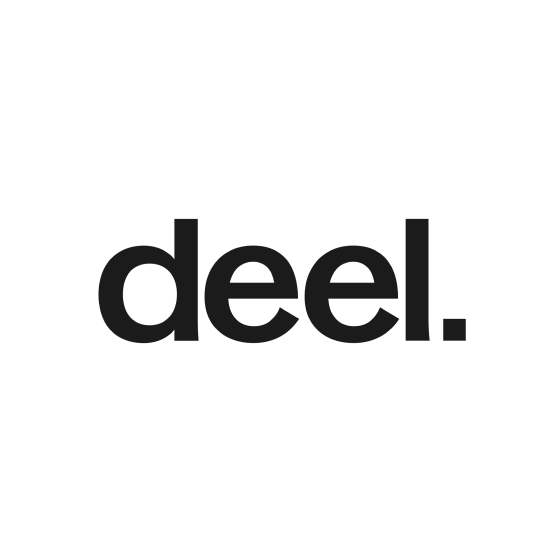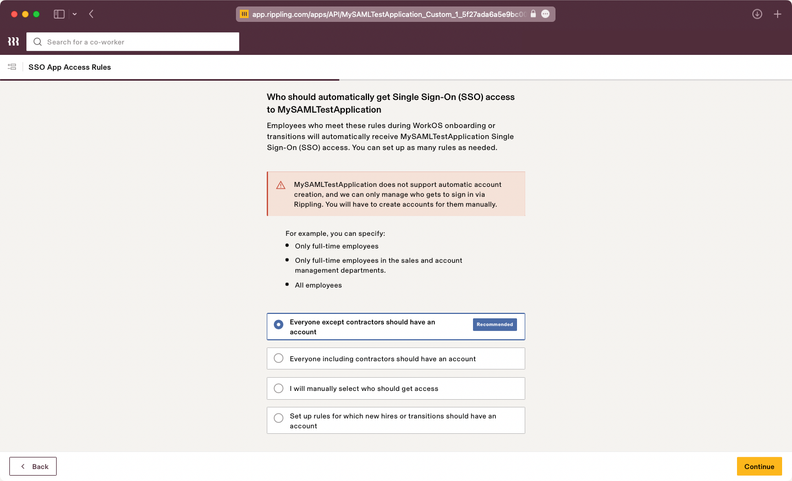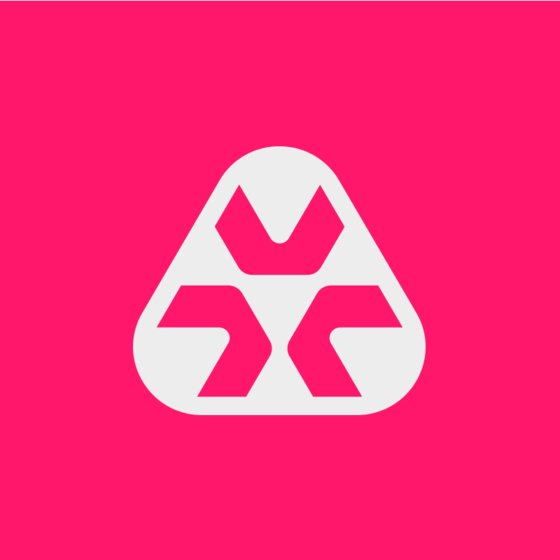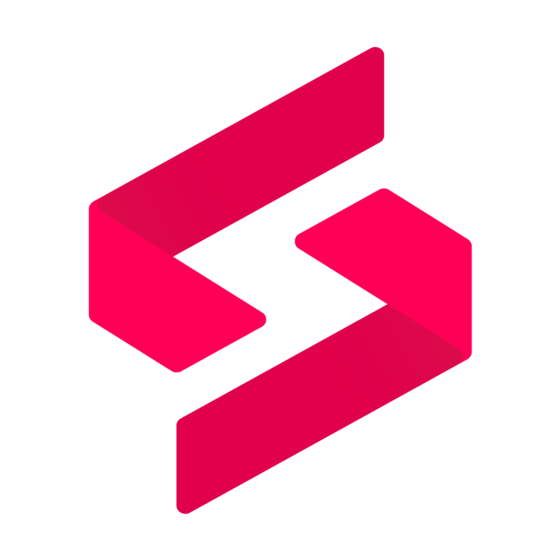10 Best IT Asset Management Software Shortlist
Here's my pick of the 10 best software from the 20 tools reviewed.
Our one-on-one guidance will help you find the perfect fit.
Managing IT assets can quickly become overwhelming—scattered spreadsheets, disjointed records, and manual tracking often lead to inefficiencies and missed details. If you’ve ever lost track of hardware, struggled with outdated software licenses, or faced compliance headaches, you know how easily things can spiral out of control. These challenges not only waste time but also put organizations at risk of unnecessary costs and security gaps.
That’s where IT asset management (ITAM) software comes in. It helps you track, organize, and optimize your assets, offering real-time visibility and automation that eliminates manual errors. Drawing from years of experience navigating these exact challenges, I’ve tested various ITAM solutions to identify which ones truly deliver results. In this guide, I’ll share my top picks, focusing on key features, integrations, and real-world performance to help you choose the right solution for your organization.
What is IT Asset Management Software?
IT asset management software is a digital tool designed to oversee and optimize the inventory, lifecycle management, and usage of IT assets within an organization. Typically leveraged by IT departments, procurement teams, and operations managers, this software aids in tracking hardware, software, and other IT assets, ensuring compliance, efficient resource allocation, and cost-effective asset utilization.
Adopting IT asset management best practices at each stage ensures that organizations maximize value while minimizing risk. By centralizing asset information, these platforms enable organizations to make informed decisions, reduce risks, and maximize the return on technology investments.
-

Docker
Visit WebsiteThis is an aggregated rating for this tool including ratings from Crozdesk users and ratings from other sites.4.6 -

Pulumi
Visit WebsiteThis is an aggregated rating for this tool including ratings from Crozdesk users and ratings from other sites.4.8 -

GitHub Actions
Visit Website
Overviews of The 10 Best IT Asset Management Software
Deel is a comprehensive platform designed to support global HR, payroll, and IT operations, making it a versatile solution for companies with international teams. Originally built for hiring and compliance across borders, Deel has expanded its offerings by incorporating IT management through the acquisition of Hofy.
Why I Picked Deel: Deel can handle equipment procurement, deployment, and tracking across 130+ countries. For companies managing global teams, this kind of reach is crucial for maintaining smooth operations without worrying about complex logistics, customs, or compliance issues. Deel also excels in providing real-time visibility over all physical assets like laptops and other hardware, including those owned or leased from third-party vendors, giving businesses control over asset health and inventory on a global scale.
Standout features & integrations:
Additional standout features include robust 24/7 global support, which ensures that employees can resolve technical issues quickly no matter where they are, and the platform’s ability to automate device refresh cycles, saving companies both time and costs. Deel integrates with key tools like Apple Business Manager, Windows Autopilot, Okta, OneLogin, Rippling, and Workday.
Pros and cons
Pros:
- Can combine HR and IT asset management in one
- Helps automate asset workflows
- Supports equipment deployment in over 130 countries
Cons:
- May not be ideal for teams with very complex IT asset needs
- Doesn't offer features beyond device management, like network and server management
New Product Updates from Deel
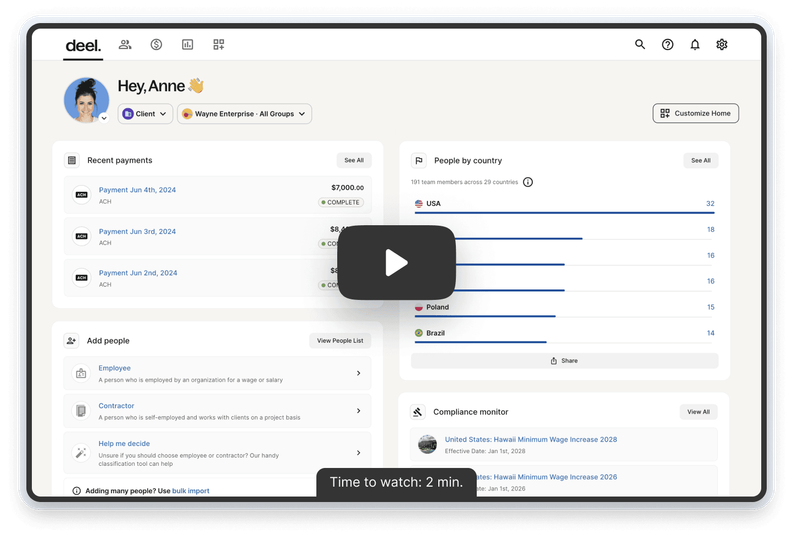
500+ New Platform Enhancements for Global Hiring and Payroll
Deel announced over 500 platform enhancements focusing on global hiring, HR, payroll, and AI-driven compliance, featuring tools for faster hiring, smarter HR management, strategic planning, and enhanced payroll flexibility. For more details, visit the source: Deel Blog.
Setyl is a cloud-based IT management platform that provides comprehensive oversight of your organization's assets, software applications, licenses, users, vendors, and expenditures. It consolidates all these elements into a single, centralized system, offering full visibility and control over your IT infrastructure.
Why I picked Setyl: You can track the entire lifecycle of each asset—from acquisition to disposal—so you can make informed decisions about maintenance and replacements. I also like its comprehensive software asset register. This feature consolidates all your SaaS subscriptions, software licenses, installed applications, and service contracts into a single, centralized platform. You can record and manage key data such as contracts, pricing structures, renewal dates, assigned users, application owners, and linked hardware devices, giving you a clear and organized overview of your software assets.
Setyl Standout Features and Integrations:
Other standout features include employee onboarding and offboarding workflows to streamline the assignment and retrieval of devices and licenses. Additionally, Setyl offers detailed activity logs as well as archiving workflows, allowing you to keep a record of all changes and prepare for security audits. The platform integrates with Google Workspace, Microsoft 365, Atera, CDW, CrowdStrike, JumpCloud, Google Endpoint Management, Okta, NinjaOne, NetSuite, Xero, Zoom, Slack, BambooHR, ADP Workforce Now, Zendesk, Jira Service Management, and Workday.
Pros and cons
Pros:
- Unlimited assets included in price
- Assistance with setup offered as standard
- Software and hardware asset management in one
Cons:
- No native mobile app
- Doesn’t offer the complex functionalities that may be needed for large enterprise organizations
Rippling IT helps your team manage everything related to people operations, including IT assets, from one place. With its centralized platform, you can automate device management, track inventory, and control access for new hires or exiting employees.
Why I Picked Rippling IT: Rippling IT is a strong choice for IT asset management because it offers tools to automate the entire lifecycle of your assets. You can assign devices, monitor their status, and even retrieve them when employees leave. It’s easy to see what’s available, who’s using what, and where your inventory gaps are. The platform even handles device provisioning and remote lock/wipe options, so your IT team can manage devices from anywhere.
Standout features & integrations:
Some standout features include automated onboarding and offboarding processes and integrations with over 600 apps. Rippling IT also supports single sign-on (SSO), multi-factor authentication (MFA), and real-time device monitoring. Available integrations include Google Workspace, Microsoft 365, Slack, Zoom, AWS, and Dropbox.
Pros and cons
Pros:
- Remote device lock and wipe capabilities
- Customizable workflow automation
- Support for onboarding and offboarding employees and their devices
Cons:
- Not all features may be necessary for smaller operations
- Can be complex to set up initially
New Product Updates from Rippling IT
Assign Identity Providers by Team with Rippling IT
Rippling IT now allows assigning specific identity providers like Okta and Entra ID to different teams, with Rippling’s SSO as a backup for instant rollbacks. More details at Rippling Blog.
Freshservice is an asset management solution designed with a keen emphasis on user experience. By streamlining complex processes into an intuitive interface, it caters to both end users and IT professionals. Given its design philosophy, it stands out as the go-to option for teams that prioritize a user-friendly asset management experience.
Why I Picked Freshservice: Among the myriad of tools I analyzed, Freshservice emerged as a distinct choice due to its clear dedication to a user-centric interface. I selected it not only for its refined aesthetics but also for how it simplifies intricate asset management tasks. For organizations that aim to empower their end users with an easy-to-navigate system, I determined that Freshservice is the best fit.
Standout features & integrations:
Freshservice boasts a customizable dashboard that adapts to varying user preferences, ensuring every user finds what they need without hassle. Its robust customer support features ensure that help is always at hand, enhancing user confidence. Integration-wise, Freshservice is versatile, with compatibility that includes popular platforms and even extends to iOS devices, adding mobility to its list of strengths.
Pros and cons
Pros:
- Strong customer support infrastructure ensures user queries are addressed promptly
- Customizable dashboard caters to diverse user needs
- A highly intuitive interface reduces the learning curve for end users
Cons:
- Configuration options could be overwhelming for novice users
- Mobile app experience may vary across devices
- Some features might be locked behind higher-priced tiers
New Product Updates from Freshservice
Freshservice's Enhanced Azure DevOps plugin
The Freshservice update enhances the Azure DevOps plugin, allowing for more actions within Freshservice, fostering better integration between ITSM tickets and DevOps workflows. For more details, visit Freshservice Product Updates.
OfficeSpace is a workplace management platform designed to help teams organize and oversee their physical work environments.
Why I Picked OfficeSpace: OfficeSpace's asset management features are particularly relevant for IT asset management. The platform allows users to create a digital inventory of assets, including detailed information such as serial numbers, purchase costs, warranty expirations, and depreciation details. This centralized system helps IT teams keep track of equipment like laptops, monitors, and other devices, ensuring that all assets are accounted for and maintained properly.
Standout features & integrations:
Another key feature is the automation of maintenance schedules and work orders. OfficeSpace enables users to set up recurring maintenance tasks and automatically generate work orders when certain conditions are met, such as low inventory levels or upcoming warranty expirations. Integrations include Microsoft Teams, Google Workspace, Slack, Office 365, and Zoom.
Pros and cons
Pros:
- Manages the entire asset lifecycle
- Automated maintenance scheduling
- Detailed inventory management
Cons:
- May not cover all types of IT assets
- No mobile app available
Atera is an IT management platform that helps you oversee your organization’s hardware assets, software environments, and IT operations. It combines asset management, remote monitoring, automation, and helpdesk features into a single centralized system.
Why I picked Atera:
Atera makes it easy to track your IT assets throughout their entire lifecycle—from onboarding to retirement—so you always know where devices are, who’s using them, and what condition they’re in. I also appreciate Atera’s pay-per-technician model, which allows unlimited endpoint management without hidden fees. This is ideal for growing IT teams looking to consolidate asset tracking, remote maintenance, and IT support into one streamlined platform.
Atera Standout Features and Integrations:
Atera’s combination of Remote Monitoring and Management (RMM) with Professional Services Automation (PSA) lets you manage both hardware assets and IT support operations from one place. Other standout features include automated patch management, proactive alerts, and remote access tools like Splashtop and TeamViewer to assist with troubleshooting. Atera also supports automated onboarding and offboarding, helping IT teams manage device assignments and permissions efficiently. Integrations include Microsoft Teams, Slack, WhatsApp Notifications, Microsoft Outlook, Asana, ClickUp, Acronis Cyber Protect Cloud, Salesforce, Jira Software Cloud, Google Chat, Azure Active Directory, Okta, Freshservice, RingCentral, Google Sheets, and ChatGPT (OpenAI).
Pros and cons
Pros:
- Centralizes ticketing, RMM, PSA, and asset management
- Proactive issue detection and automation options
- Detailed reporting and client-facing dashboards
Cons:
- Learning curve for new users due to breadth of features
- Some limitations in PSA and billing features
SuperOps is a PSA-RMM platform designed for MSPs, offering features such as asset, policy, patch, and client management. It automates time-consuming tasks for MSP companies, such as server checking, updating, and restarting, saving them the time and effort associated with manual work.
Why I Picked SuperOps: The asset management feature simplifies the process of managing and performing tasks on assets, ensuring they are always patched and equipped with the necessary software. SuperOps also excels in automation capabilities, including user-friendly scripting and ticket automation modules. I also appreciate its intuitive interface, which makes for easier adoption for new technicians.
Standout features & integrations:
Standout features include policy, patch, alert, and desktop management, as well as tools for remote access. It also offers a service desk, scheduling, reporting, project management, and contract and client management with the ability to manage invoices and payments. It supports integrations with tools like Splashtop, TeamViewer, Bitdefender, Xero, QuickBooks, Stripe, SentinelOne, Guardz, Hudu, Emsisoft, Microsoft Azure, and Webroot.
Pros and cons
Pros:
- Easy-to-learn platform
- RMM and PSA tools in one platform
- Automates time-consuming tasks
Cons:
- Client portal could be improved
- Limited support for other languages
InvGate Asset Management is an IT asset management solution that helps you discover, centralize, and manage your organization's physical, virtual, and cloud assets. It offers a unified view of your IT infrastructure, enabling better decision-making and operational efficiency.
Why I Picked InvGate: I chose InvGate Asset Management for its ability to simplify the onboarding process with multiple methods to build your inventory. These methods include Agent-based installations, Agentless discovery, manual entry, and third-party integrations with tools like Lansweeper, FileWave, VMware, Intune, and Jamf.
The platform also lets you automate asset lifecycle management. It helps IT teams track hardware assets from procurement to disposal while leveraging smart automation to enforce policies and categorize assets. Custom fields allow you to track asset details specific to your organization, from lifecycle data to usage policies and compliance.
Standout features & integrations:
Other features include inventory creation flexibility and IT spend optimization with insights into software usage, license assignments, and asset utilization. Additionally, when combined with InvGate’s IT service management (ITSM) solution, organizations can create advanced workflows that connect asset management with service requests, incidents, and change management processes. Asset data can be imported via integrations with platforms like Lansweeper, FileWave, VMware, Intune, Jamf, Microsoft Active Directory, and Okta.
Pros and cons
Pros:
- Effective software license management
- Centralized contract management
- Comprehensive asset discovery and inventory capabilities
Cons:
- Technical capabilities like staging and VPN are limited to higher-tier plans
- Could offer more native integrations
Prey is a security and asset management solution that helps you track and safeguard your organization's devices. It offers live location monitoring, security controls, and data protection to ensure your assets remain accounted for and secure.
Why I Picked Prey: I chose Prey because of its real-time tracking and geofencing capabilities, which make it a strong asset management tool. It continuously monitors device locations using GPS and Wi-Fi triangulation, helping you track and recover lost or stolen assets. The geofencing feature lets you set up virtual boundaries and receive alerts if a device moves outside an approved area, ensuring better oversight and quicker responses to potential security risks.
Standout features & integrations:
Other features include remote data wiping, which lets you erase sensitive information from lost or stolen devices. Remote encryption secures data on Windows devices, preventing unauthorized access. It even has a factory reset option that restores a device to default settings remotely. Some integrations include CloudEagle, ServiceNow, and Okta.
Pros and cons
Pros:
- Good for managing multiple devices across locations
- Includes remote functions, like encryption and factory reset
- Effective device location tracking
Cons:
- Automations limited to the full suite
- Activity logs and history only date back a month
Josys is a comprehensive SaaS management platform designed to optimize IT asset management for businesses. By centralizing the management of software and hardware, Josys helps organizations enhance operations, reduce costs, and mitigate risks associated with IT assets.
Why I Picked Josys: It offers powerful capabilities for managing both SaaS and device assets, enabling businesses to keep a precise inventory of all IT resources. Josys excels in providing detailed insights into asset utilization, helping organizations identify underused assets and optimize their usage. Additionally, its automated workflows and alert systems help with asset tracking and maintenance, reducing manual effort and ensuring timely actions to prevent downtime.
Standout features & integrations:
Josys boasts a range of standout features, including automated asset discovery, real-time tracking, lifecycle management, compliance reporting, and advanced analytics. Its integrations include Microsoft Azure, Google Workspace, ServiceNow, Slack, Salesforce, and Okta.
Pros and cons
Pros:
- Intuitive user interface
- Manages SaaS accounts
- Ability to inventory IT devices in real time
Cons:
- Filtering and reporting functions could be improved
- Customization is limited
The Best IT Asset Management Software Summary
| Tool | Best For | Trial Info | Price | ||
|---|---|---|---|---|---|
| 1 | Best for global asset management | Free trial + demo available | From $29/month | Website | |
| 2 | Best for asset and license management in one | Free demo available | Pricing upon request | Website | |
| 3 | Best for automating the entire IT asset lifecycle | Free trial available | From $8/user/month (billed annually) | Website | |
| 4 | Best for intuitive asset management interface | 14-day free trial + free demo available | From $19/user/month (billed annually) | Website | |
| 5 | Best for creating asset inventories | Free demo available | Pricing upon request | Website | |
| 6 | Best for full device lifecycle visibility | Free trial available | From $149/technician/month (billed annually) | Website | |
| 7 | Best for managed service providers | Free trial available | From $79/license/month (billed annually) | Website | |
| 8 | Best for simplifying IT asset onboarding | Free trial available | From $0.21/node/month | Website | |
| 9 | Best for device movement visibility | Free trial available | From $1.30/month | Website | |
| 10 | Best for unified SaaS and device management | Free demo available | Pricing upon request | Website |
Other Noteworthy IT Asset Management Software
Below is a list of additional it asset management software that I shortlisted but did not make it to the top 10. Definitely worth checking them out.
- Limble
For preventive IT maintenance automation
- Device42
For comprehensive IT asset visualization
- SolarWinds Service Desk
For incident and asset correlation
- OpenText Asset Management X
For enterprise-level asset scalability
- Alloy Software
For integrated IT service management
- ScalePad
For configuration management
- Ivanti Neurons for ITAM
For proactive IT asset insights
- ServiceNow IT Asset Management (ITAM)
For unified IT operations
- IBM Flexera One
For software license optimization
- NinjaOne
For remote IT asset management
Selection Criteria for Choosing IT Asset Management Software
In the realm of IT Asset Management (ITAM) software, I've navigated through the digital labyrinth of offerings to identify what truly matters. With a plethora of options available, it can be overwhelming to determine which tool is the best fit. But worry not; I've personally tried and researched numerous tools. I evaluated dozens of ITAM and IT inventory management software and was keenly searching for specific functionalities and features that I'll delve into below.
Core Functionality
For an IT Asset Management software to be deemed valuable, it should enable the user to:
- Asset Discovery: Automatically detect and categorize new assets in the IT environment.
- Inventory Management: Maintain an updated list of all IT assets, their configurations, and their locations.
- License Management: Ensure software licenses are compliant, and unused licenses are effectively recycled or retired.
- Lifecycle Management: Track the entire lifecycle of an asset from procurement to IT asset disposal.
Key Features
When dissecting the numerous features offered by ITAM tools, these stood out as game-changers:
- Integration Capabilities: Can the tool easily integrate with other systems like CRM, ERP, or IT service management software?
- Reporting and Analytics: The tool should offer insights into asset utilization, costs, and forecasts to assist in decision-making.
- Automated Alerts: Notifications about irregularities such as unauthorized software installations or expiring warranties.
- Cloud and On-premise Asset Tracking: With the rise of remote work, tracking assets across both on-premise and cloud environments is vital.
- Security and Compliance: Features that ensure assets adhere to regulatory standards and policies, reducing potential risks.
Usability
The user experience in an ITAM tool is paramount. Here's what I focused on:
- Interactive Dashboards: A comprehensive dashboard that gives a quick snapshot of all assets, their statuses, and alerts, preferably with customization options to suit individual needs.
- Filtering and Tagging Interface: With the myriad of assets being managed, the ability to quickly filter through or tag assets becomes invaluable. For instance, if I want to see all assets that are due for maintenance, a simple filter or tag should enable this.
- Role-Based Access: In larger organizations, not everyone needs full access. The software should allow easy configuration of user roles, ensuring staff only see what's relevant to their job.
- Learning Library or Training Program: Given the complexities associated with enterprise-level ITAM tools, having a structured onboarding program or an accessible wiki can be the difference between successful adoption and overwhelming confusion.
With these criteria in mind, the task of selecting the ideal ITAM software becomes more manageable. Always remember to align the software's offerings with the specific needs of your organization.
Most Common Questions Regarding IT Asset Management Software (FAQs)
What are the benefits of using IT Asset Management software?
Using IT Asset Management software offers numerous advantages:
- Comprehensive Visibility: Gain an overview of every IT asset, its status, and its location, ensuring nothing falls through the cracks.
- Cost Savings: By tracking and managing licenses, warranties, and hardware effectively, companies can avoid unnecessary purchases and penalties.
- Enhanced Security: Stay ahead of potential security breaches by monitoring software installations and hardware access.
- Regulatory Compliance: Helps ensure software licenses and hardware practices are in line with industry regulations.
- Optimized Asset Usage: By understanding asset usage patterns, organizations can make informed decisions about renewals, retirements, and procurements.
How much do these tools typically cost?
The cost of IT Asset Management software varies widely based on features, integrations, and scalability requirements. They can range from free versions with basic features to enterprise solutions costing thousands of dollars per month.
What are the common pricing models for IT Asset Management software?
Most ITAM software providers follow one of these pricing models:
- Per User/Per Month: You pay a monthly fee based on the number of users accessing the software.
- Per Asset: Pricing is based on the number of assets being managed.
- Flat Fee: A fixed monthly or yearly fee, regardless of users or assets.
- Freemium: A basic version of the software is available for free, with more advanced features available for a fee.
What's the typical price range for these tools?
For small to medium-sized businesses, ITAM tools can start as low as $10/user/month and can go up to $100/user/month for more feature-rich options. Enterprise solutions can range from $500 to several thousands of dollars per month based on the size and needs of the organization.
Which is the cheapest software available?
Snipe-IT is one of the notable tools that offers a free, open-source version for users. While it might lack some advanced features, it’s suitable for basic asset management needs.
Which is the most expensive IT Asset Management software?
Enterprise solutions like IBM Maximo or Flexera Software Asset Management tend to be at the higher end of the pricing spectrum because of their comprehensive features, scalability, and integration capabilities.
Are there any free options available?
Yes, several IT Asset Management tools offer free versions. Snipe-IT, as mentioned earlier, offers a free, open-source version. However, these free options might have limited features and are typically suitable for small businesses or teams.
Is it worth investing in a premium IT Asset Management software?
For larger organizations or those with complex IT infrastructures, investing in premium IT Asset Management software can yield significant returns in terms of cost savings, security, and compliance. The automation, integrations, and comprehensive management they offer often justify the investment.
Other IT Asset Management Software Reviews
- Software Asset Management Software
- Asset Management Software For IT Teams
- Help Desk Software with Asset Management
Summary
Navigating the vast landscape of IT asset management software can be a challenging task. With various features, integrations, and pricing models, it's essential to identify the tools that align perfectly with an organization's specific needs. This guide has distilled the essence of what makes for a competent IT asset management software and presented a curated list of the best tools available.
Key Takeaways:
- Core Functionality Matters: Not all IT asset management software is created equal. The core functionality, like tracking assets across their lifecycle, integration capabilities, and real-time monitoring, can greatly influence a tool's efficacy for your organization.
- Usability and Design Can Influence Productivity: The best software has an intuitive user interface tailored to this niche, making asset tagging, filtering, and other tasks more straightforward. Remember, a tool with a steep learning curve can impede adoption rates and overall productivity.
- Consider the Total Cost: Beyond just the sticker price, consider the scalability, any hidden costs associated with integrations, and the potential return on investment. It's also worth noting that while there are premium solutions available, there are also robust free options in the market that might be a fit for smaller teams or businesses.
What Do You Think?
We've done our best to curate a list of the top IT asset management software available. However, the tech world is vast and ever-evolving.
If you've encountered a tool that has impressed you or believe there's a hidden gem we might have missed, we'd love to hear from you. Please share your recommendations and insights, and together, let's make this resource even better for everyone.




